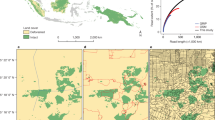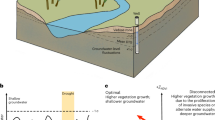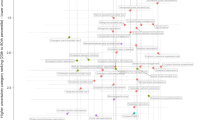Abstract
Recent decades have witnessed a considerable increase in Payments for Ecosystem Services (PES)—programmes that exchange value for land management practices intended to provide or ensure ecosystem services—with over 550 active programmes around the globe and an estimated US$36–42 billion in annual transactions. PES represent a recent policy instrument with often very different programmes operating at local, regional and national levels. Despite the growth of these programmes, comprehensive and reliable data have proven difficult to find. This Analysis provides an assessment of the trends and current status of PES mechanisms—user-financed, government-financed and compliance—across the domains of water, biodiversity, and forest and land-use carbon around the world. We report the various dimensions of growth over the past decade (number of programmes, geographical spread, dollar value) to understand better the range of PES mechanisms over time and to examine which factors have contributed to or hindered growth. Four key features stand out for scaling up PES: motivated buyers, motivated sellers, metrics and low-transaction-cost institutions.
This is a preview of subscription content, access via your institution
Access options
Access Nature and 54 other Nature Portfolio journals
Get Nature+, our best-value online-access subscription
$29.99 / 30 days
cancel any time
Subscribe to this journal
Receive 12 digital issues and online access to articles
$119.00 per year
only $9.92 per issue
Buy this article
- Purchase on Springer Link
- Instant access to full article PDF
Prices may be subject to local taxes which are calculated during checkout
Similar content being viewed by others
References
Rescuing environmentalism. The Economist (21 April 2005).
Chen, C. et al The institutional challenges of payment for ecosystem service program in China: a review of the effectiveness and implementation of Sloping Land Conversion Program. Sustainability 7, 5564–5591 (2015).
Salzman, J. What is the emperor wearing? The secret lives of ecosystem services. Pace Environ. Law Rev. 28, 591–613 (2011).
Wunder, S. Revisiting the concept of payments for environmental services. Ecol. Econ. 117, 234–243 (2015).
Vatn, A. Markets in environmental governance. Theory Pract. Ecol. Econ. 117, 225–233 (2015).
Engel, S., Pagiola, S. & Wunder, S. Designing payments for environmental services in theory and practice: an overview of the issues.Ecol. Econ. 65, 663–674 (2008).
Liu, J. et al. Ecological and socioeconomic effects of China’s policies for ecosystem services. Proc. Natl Acad. Sci. USA 105, 9477–9482 (2008).
Ouyang, Z. et al. Improvements in ecosystem services from investments in natural capital. Science 352, 1455–1459 (2016).
Daily et al. Securing natural capital and human well-being: innovation and impact in China. Acta Ecol. Sin. 33, 677–685 (2013).
Bremer, L. et al. One size does not fit all: natural infrastructure investments within the Latin American Water Funds Partnership. Ecosyst. Serv. 17, 217–236 (2016).
Vogl, A. et al. Mainstreaming investments in watershed services to enhance water security: barriers and opportunities. Environ. Sci. Policy 75, 19–27 (2017).
Maron, M. et al. Conservation: stop misuse of biodiversity offsets. Nature 523, 401–403 (2015).
Salzman, J. & Ruhl, J. B. Currencies and the commodification of environmental law. Stanf. Law Rev. 53, 607–694 (2000).
Ruhl, J. B. et al. The effects of wetland mitigation banking on people. Natl Wetl. Newsl. 28, 2 (2006).
National Research CouncilCompensating for Wetland Losses Under the Clean Water Act (National Academies Press, Washington DC, 2001).
Pattanayak, S. K., Wunder, S. & Ferraro, P. J. Show me the money: do payments supply environmental services in developing countries? Rev. Environ. Econ. Policy 4, 254–274 (2010).
Brouwer, R., Tesfaye, A. & Pauw, P. Meta-analysis of institutional-economic factors explaining the environmental performance of payments for watershed services. Environ. Conserv 38, 380–392 (2011).
Miteva, D. A., Pattanayak, S. K. & Ferraro, P. J. Evaluation of biodiversity policy instruments: what works and what doesn’t? Oxf. Rev. Econ. Policy 28, 69–92 (2012).
Ferraro, P. J. et al. Estimating the impacts of conservation on ecosystem services and poverty by integrating modeling and evaluation. Proc. Natl Acad. Sci. USA 112, 7420–7425 (2015).
Alix-García, J. & Wolff, H. Payment for ecosystem services from forests. Annu. Rev. Resour. Econ. 6, 361–380 (2014).
Jayachandran, P. et al. Cash for Carbon: A Randomized Controlled Trial of Payments for Ecosystem Services to Reduce Deforestation NBER Working Paper 22378 (NBER, 2016).
Sanchez-Azofeifa, G. A. et al. Costa Rica’s Payment for Environmental Services program: intention, implementation, and impact. Conserv. Biol. 21, 1165–1173 (2007).
Alix-Garcia, J. M., Shapiro, E. N. & Sims, K. R. E. Forest conservation and slippage: evidence from Mexico’s national Payments for Ecosystem Services program. Land Econ. 88, 613–638 (2012).
Heilmayr, R. & Lambin, E. F. Impacts of non-state, market-driven governance on Chilean forests. Proc. Natl Acad. Sci. USA 113, 2910–2915 (2015).
Lambin, E. F. et al. Effectiveness and synergies of policy instruments for land use governance in tropical regions. Glob. Environ. Change 28, 129–140 (2014).
Gullison, G. E. Does forest certification conserve biodiversity? Oryx 37, 153–165 (2003).
Zheng, H. et al. Benefits, costs, and livelihood implications of a regional payment for ecosystem service program. Proc. Natl Acad. Sci. USA 110, 16681–16686 (2013).
Richards, M. What Do We Know about Gender and Other Social Impacts of IWS Projects? A Literature Review (Forest Trends, Washington DC, 2013).
Wunder, S. Payments for environmental services and the poor: concepts and preliminary evidence. Environ. Dev. Econ. 13, 279–297 (2008).
Alix-Garcia, J. M., Sims, K. R. & Yañez-Pagans, P. Only one tree from each seed? environmental effectiveness and poverty alleviation in Mexico’s Payments for Ecosystem Services program. Am. Econ. J. Econ. Policy 7, 1–40 (2015).
Samii, C., Lisiecki, M., Kulkarni, P., Paler, L. & Chavis, L. E. Effects of payment for environmental services (PES) on deforestation and poverty in low and middle income countries: a systematic review. Campbell Syst. Rev. 10, https://doi.org/10.4073/csr.2014.11 (2014).
Sims, K. & Alix-Garcia, J. Parks versus PES: evaluating direct and incentive-based land conservation in Mexico. J. Environ. Econ. Managem. 86, 8–28 (2017).
Rodríguez de Francisco, J. C., Budds, J. & Boelens, R. Payment for environmental services and unequal resource control in Pimampiro, Ecuador. Soc. Nat. Resour. 26, 1217–1233 (2013).
Bottazzi, P. et al. Carbon sequestration in community forests: trade-offs, multiple outcomes and institutional diversity in the Bolivian Amazon. Dev. Change 45, 105–131 (2014).
Huettner, M. Risks and opportunities of REDD+ implementation for environmental integrity and socio-economic compatibility. Environ. Sci. Policy 15, 4–12 (2012).
Jindal, R., Kerr, J. M. & Carter, S. Reducing poverty through carbon forestry? Impacts of the N’hambita Community Carbon Project in Mozambique. World Dev. 40, 2123–2135 (2012).
Poudel, M., Thwaites, R., Race, D. & Dahal, G. R. Social equity and livelihood implications of REDD+ in rural communities—a case study from Nepal. Int. J. Commons 9, 177–208 (2015).
Naeem, S. et al. Get the science right when paying for nature’s services. Science 347, 1206–1207 (2015).
Ferraro, P. J. & Pressey, R. L. Measuring the difference made by conservation initiatives: protected areas and their environmental and social impacts. Phil. Trans. R. Soc. Lond. B Biol. Sci. 370, 20140270 (2015).
Jayachandran, S. et al. Cash for carbon: a randomized trial of payments for ecosystem services to reduce deforestation. Science 357, 267–273 (2017).
Maron, M. et al. The many meanings of no net loss in environmental policy. Nat. Sustain. 1, 19–27 (2018).
Madsen, B., Carroll, N. & Moore Brands, K. State of Biodiversity Markets 2010 (Ecosystem Marketplace, 2010); http://www.ecosystemmarketplace.com.
Madsen, B., Carroll, N., Kandy, D. & Bennett, G. State of Biodiversity Markets 2011 Update (Ecosystem Marketplace, 2011); http://www.ecosystemmarketplace.com.
Bennett, G., Gallant, M. & ten Kate, K. State of Biodiversity Mitigation 2017 (Ecosystem Marketplace, 2017); http://www.ecosystemmarketplace.com.
Wilkinson, J. & Thompson, J. 2005 Status Report on Compensatory Mitigation in the United States. (Environmental Law Institute, Washington DC, 2006).
Acknowledgements
The authors are grateful for the fellowship support of Resources for the Future and the Rockefeller Foundation, as well the gift to the Duke University School of Law from the Eugene T. Bost, Jr. Research Professorship of The Cannon Charitable Trust No. 3. Research support was provided by K. Hamrick, A. Cooper, K. Silverman-Roati and D. Carpenter-Gold.
Author information
Authors and Affiliations
Contributions
J.S. conceived the project, analysed the data and wrote the paper. G.B. performed data collection and analysis and wrote the paper. N.C. and A.G. performed data collection and analysis. M.J. edited the paper.
Corresponding author
Ethics declarations
Competing interests
The authors declare no competing interests.
Additional information
Publisher’s note: Springer Nature remains neutral with regard to jurisdictional claims in published maps and institutional affiliations.
Supplementary information
Supplementary Information
4 pages with supplementary methods description, 1 suppl. Table
Rights and permissions
About this article
Cite this article
Salzman, J., Bennett, G., Carroll, N. et al. The global status and trends of Payments for Ecosystem Services. Nat Sustain 1, 136–144 (2018). https://doi.org/10.1038/s41893-018-0033-0
Received:
Accepted:
Published:
Issue Date:
DOI: https://doi.org/10.1038/s41893-018-0033-0
This article is cited by
-
FSC-certified forest management benefits large mammals compared to non-FSC
Nature (2024)
-
A comprehensive study on non-governmental actors in shaping grassland ecological compensation within legal frameworks
Scientific Reports (2024)
-
The principles of natural climate solutions
Nature Communications (2024)
-
Understanding the sociocultural valuation of ecosystem services in urban parks: a Colombian study case
Urban Ecosystems (2024)
-
Challenges and lessons learned for REDD+ finance and its governance
Carbon Balance and Management (2023)



